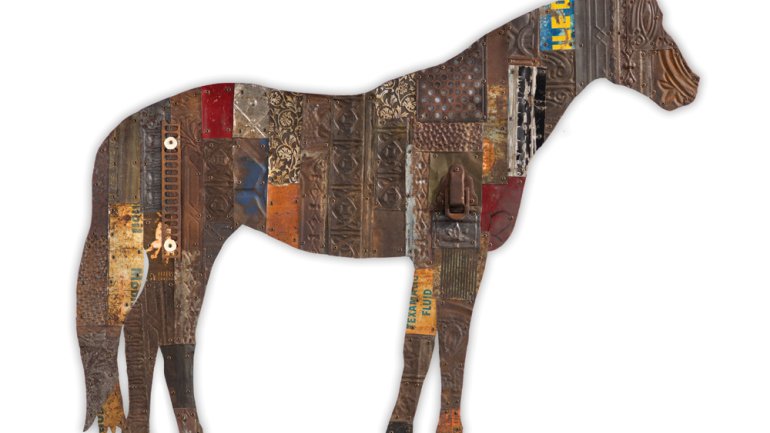Natural Curiosity
Natural Curiosity
The uncanny assemblages that Chicago artist Jessica Joslin builds out of materials such as antique chandeliers, velvet, and old gloves often evoke the Victorian era and its zeal for natural history and arcane technology. Theodora appears thoroughly mechanical yet ready to take flight at any moment.
How does Chicago artist Dolan Geiman describe his aesthetic? As “contemporary art with a Southern accent,” an apt way to introduce his menagerie of animal assemblages influenced by his childhood on a Virginia farm and work as a Forest Service naturalist.
For sculptural works such as Mamont, made of walnut, Laura Buchan draws inspiration from creatures both living and extinct – in this case, an octopus and a woolly mammoth. The artist, who lives in Portland, Oregon, chooses these juxtapositions to draw attention to issues such as dwindling biodiversity and mass extinction.
To create big, botanical beauties such as these 26-inch chrysanthemums, San Francisco artist Tiffanie Turner works with heavy-gauge Italian crepe paper, a material that provides ample ways to express the ephemeral life of a flower, from full bloom to eventual decay.
By some estimates, there are between 25,000 and 30,000 species of orchids. Seattle glass artist Debora Moore has traveled the world to study this mesmerizing family of flowers and re-imagines their elegance in work such as her Gigantica series, which is influenced by the symbiotic relationship between orchids and insects.
Inspired by the folk tales he grew up with, self-taught Yorkshire artist Mister Finch creates whimsical insects and other critters from forgotten scraps of fabric. Each work is a “storytelling creature,” says the artist, “for people who are also a little lost, found, and forgotten.” This moth appears in his recently published book Mister Finch: Living in a Fairytale World (Glitterati Incorporated).
Is it a piece of wood? Or a functional teapot? In the work of North Carolina ceramist Eric Serritella, clay intimately mimics the nuances of birch bark, weathered logs, and even charred tree limbs. Serritella wants his work to foster environmental awareness and encourage viewers to “walk with softer steps.”

